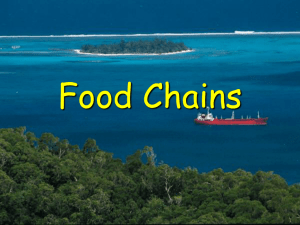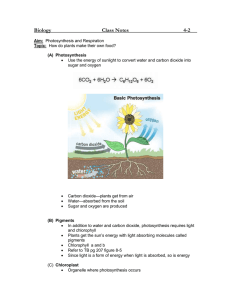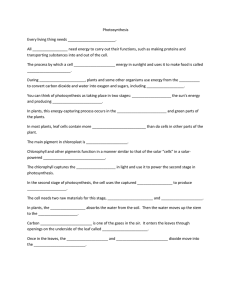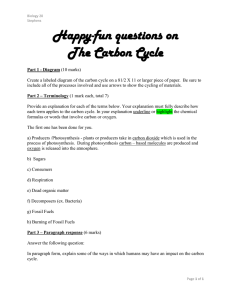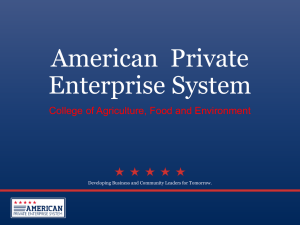Summary Producers and Consumers Consumers living things for food
advertisement
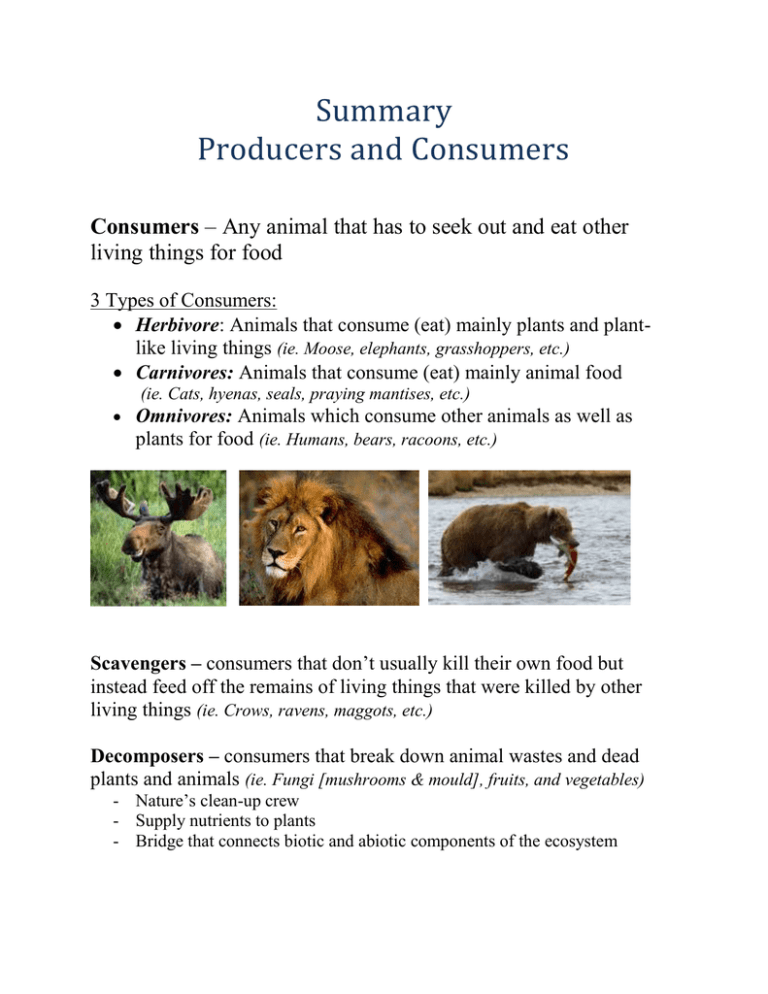
Summary Producers and Consumers Consumers – Any animal that has to seek out and eat other living things for food 3 Types of Consumers: Herbivore: Animals that consume (eat) mainly plants and plantlike living things (ie. Moose, elephants, grasshoppers, etc.) Carnivores: Animals that consume (eat) mainly animal food (ie. Cats, hyenas, seals, praying mantises, etc.) Omnivores: Animals which consume other animals as well as plants for food (ie. Humans, bears, racoons, etc.) Scavengers – consumers that don’t usually kill their own food but instead feed off the remains of living things that were killed by other living things (ie. Crows, ravens, maggots, etc.) Decomposers – consumers that break down animal wastes and dead plants and animals (ie. Fungi [mushrooms & mould], fruits, and vegetables) - Nature’s clean-up crew - Supply nutrients to plants - Bridge that connects biotic and abiotic components of the ecosystem Producers – Living things that are capable of making their own food; all green plants are producers Food – water and carbon dioxide Energy – Sun Color – Plants are green because they contain chlorophyll o Chlorophyll: a substance that absorbs all colours of light except green. The green light is reflected off the plant, this is why producers are green. Photosynthesis: process where plants use the sun, carbon dioxide, and water to make their own food Photosynthesis is important for 3 main reasons: It turns the suns energy into chemical energy that we can use for energy It provides plants with food that we need to help us function It creates the oxygen in the air that we breathe. Cellular Respiration: living things release the energy that is stored in their food (in the form of sugar). The sugars combine with oxygen to release the energy and give off carbon dioxide as a by-product.
